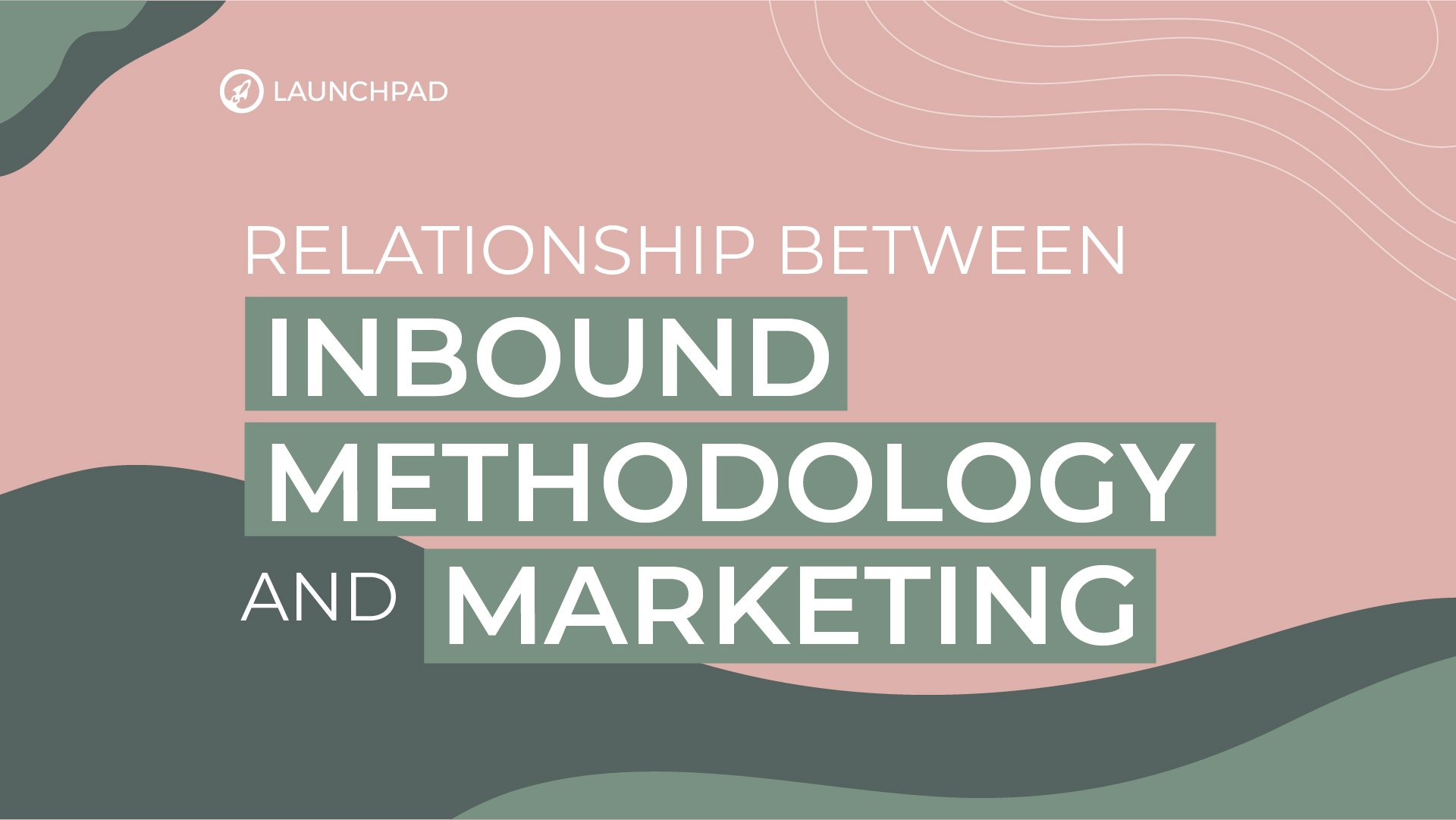
Traditionally, one may understand marketing as a process of interesting prospects to buy a product or service offered. Here in Launchpad, we are believers in executing marketing the ‘inbound way’. Inbound marketing has a prime objective of creating a one-to-one relationship with its’ prospects by crafting content that aligns and fits the needs of prospects. Why is this necessary? Personalization is not just a fad but a necessity in ensuring the success of your marketing efforts.
By creating one general marketing campaign and pushing it all out, your attempts may fail as they do not resonate with prospects. By implementing inbound methodology into your marketing efforts, you’re more likely to compel conversion and build a trusting relationship. It is from this foundation of trust, a genuine relationship with prospects can be built thus nurturing company growth.
The Inbound Methodology
Before we get into the mechanism of inbound marketing, let’s first look at the inbound methodology itself. The inbound methodology that we will be looking at in this blog illustrates three stages your team will use to create and maintain relationships with prospects. This methodology is presented in a flywheel format as it is believed that a flywheel keeps momentum consistent in comparison to a funnel. We will first go through what each stage means in detail and how your marketing efforts come into play throughout these stages.

Attract
The purpose of the attract stage is to attract in prospects through relevant and helpful content provided by your business. Do note that we’ve mentioned ‘attract in’ as that is what makes a business inbound. An inbound business doesn’t attempt to gain customer attention forcefully but rather empower consumers to choose their business; using content as tools of persuasion. This, in return, organically attracts prospects to seek your business to fix a given problem.
The attract stage highlights the prime difference between a traditional business and an inbound business. In inbound, it’s all about empowering customers with the option of choosing you instead of rubbing your product or service in their faces. The latter has shown to repel prospects away. To put it in simpler terms, you may look at your content as nectar and your customers as bees. Naturally, bees will be drawn to the flower (your business) that provides the nectar (useful content).

In the attract phase, marketers are responsible for creating content that builds a perception that your business is a thought leader and an expert in your given field and industry. Once that perception is built, it is best assured that trust is concurrently also built towards your business. Safe to say, the attract phase falls heavily upon your marketing team.
Questions to answer in this phase would include:
‘What are my prospects facing struggles with and how can we fix it?’
‘How do we persuade prospects that we have the expertise to fix these problems?’
‘What content should we put out to solve our prospects’ problems?’
‘Which platforms are our prospects engaging in for us to publish these contents?’
‘How should we structure our content to enable cohesive information transfer’
Engage
Now that you’ve attracted your prospects, the next stage would be to engage. Engaging isn’t just the role of your sales reps. Engaging can be best understood as a phase whereby prospects take the desired action. What’s a desired action? It could be reading and sharing your posts, subscribing to your newsletter, saving your materials and anything that shows consumption of content is taking place. It’s the indication that trust is being built between prospect and your business.
It is at this stage marketers start mining information on the individual they are interacting with. It could consist of personal information or merely the action that they are taking on your site. Answer questions, provide solutions and insight that solves for their needs.
In the engage phase, a marketer’s role may involve ad retargeting, creating blog posts or any content based on the information you’ve collected. This is to conduct a gradual conversion of prospects into customers.
Delight
Delight is the final stage of the inbound methodology. Delighting revolves around providing outstanding experience to consumers from their interaction with your business. It is your company’s objective, at this stage, to exceed customer’s expectation that it nurtures positive word of mouth. In today’s world word of mouth would mean advocacy on social media, review sites and as usual speaking positively of your business to the people they know. At this stage, the customer service team plays the main role in ensuring consumers are beyond content that they’re prompted to be advocates of your brand.
Especially in Malaysia, many companies put it most of their effort in gaining customers and tend to fall out when it comes to maintaining them. Do remember that retaining a customer is cheaper than getting new ones. Also, to add, building a community from your advocates is more seamless than persuading them to convert by your own. This, we believe distinguishes a successful company from the rest.
Wrapping Up
In this blog we’ve discussed how to conduct marketing strategies using inbound methodology. We believe this blog will add value to any business that’s seeking to execute a more fruitful marketing approach. As believers of inbound marketing, we place faith that the inbound methodology will help you achieve a more efficient marketing strategy - and we genuinely hope we’ve eased any doubts you had and nudged you to transform your business.



